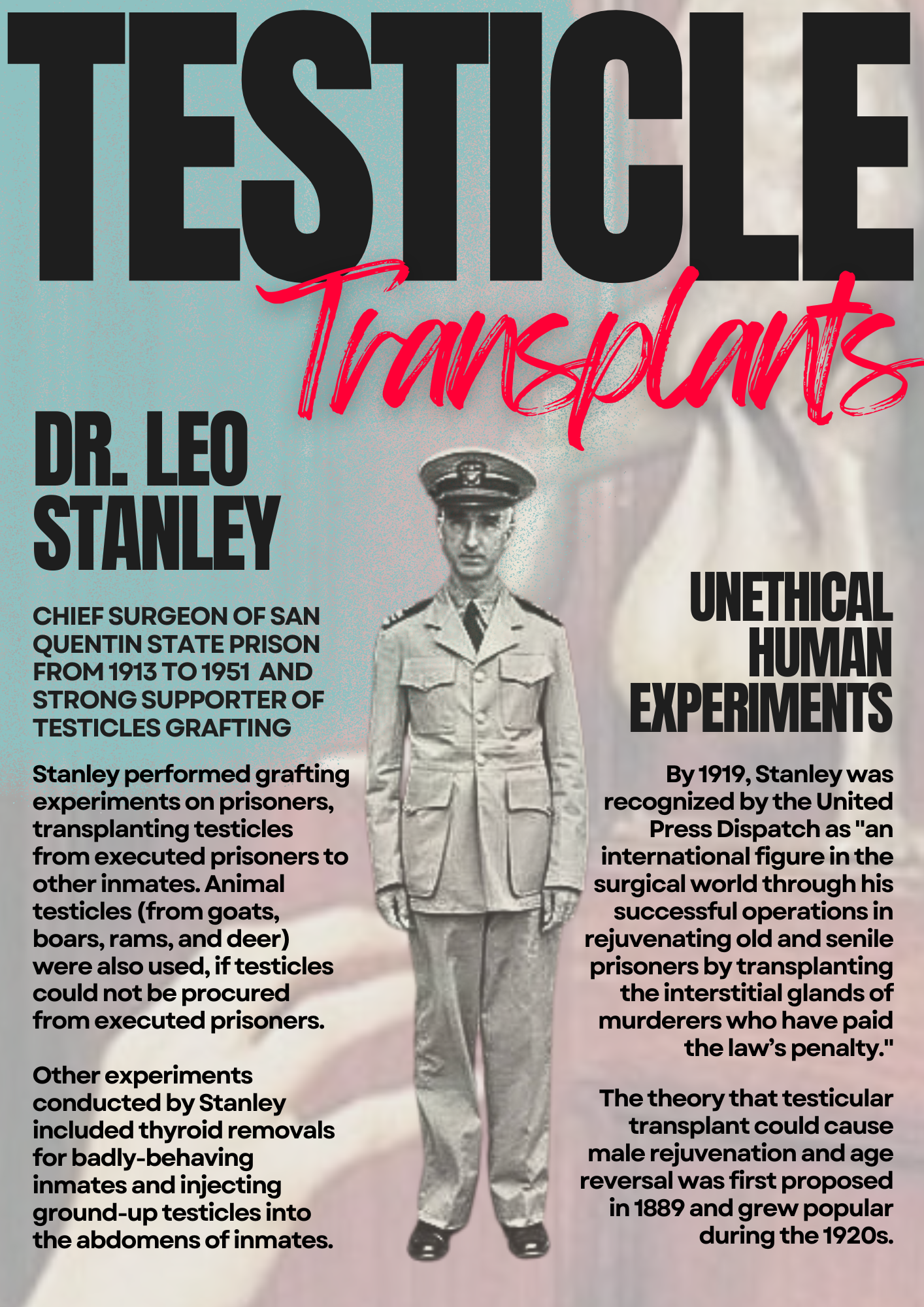Tag: Testicles
-

Dr. Leo Stanley
Let it be known throughout the land that Dr. Leo Leonidas Stanley, a man of most peculiar proclivities, did preside over San Quentin’s medical realm from the year of our Lord 1913 to 1951. This self-proclaimed surgeon, bereft of true surgical experience, did embark upon a crusade most bizarre. With a scalpel in his hand…
-

The Dark Side of the Scalpel: A Sinister History of Prison Plastic Surgery
In the shadows of correctional facilities, a chilling chapter of medical history unfolded – one that modern narratives conveniently gloss over. Prison plastic surgery programs, far from being benign attempts at rehabilitation, were rooted in disturbing practices that blurred the lines between science and sadism. The Beautification Delusion The origins of these programs stretch back…
-

The transforming growth factor beta receptors
a family of serine/threonine kinase receptors involved in TGF beta signaling pathway
-
Progastrin
Progastrin is an 80-amino acid intracellular protein and the precursor of gastrin, a gastrointestinal hormone produced by G cells in the gastric antrum. Fiona M., Gribble; Frank, Reimann; Geoffrey, P. Roberts (2018). Gastrointestinal Hormones. Physiology of the Gastrointestinal Tract, Elsevier. pp. 31–70. The main function of gastrin is to regulate acid secretion. Rehfeld, Jens F.; Goetze, Jens Peter (2005). “2 The Post-Translational Phase of Gene Expression in Tumor…
-

What Is Nitrophenol? (besides something mentioned in ‘Scientific Opinion on the re‐evaluation of aspartame as a food additive’)
Nitrophenols are compounds of the formula HOC6H5−x(NO2)x. The conjugate bases are called nitrophenolates. Nitrophenols are more acidic than phenol itself. Wikipedia Mono-nitrophenols with the formula HOC6H4NO2. Three isomeric nitrophenols exist: o-Nitrophenol (2-nitrophenol; OH and NO2 groups are neighboring; CAS number: 88-75-5), a yellow crystalline solid (m.p. 46 °C). m-Nitrophenol (3-nitrophenol, CAS number: 554-84-7), a yellow solid (m.p. 97 °C) and precursor to the…
-
Human chorionic gonadotropin (hCG)
Human chorionic gonadotropin (hCG) is a hormone for the maternal recognition of pregnancy produced by trophoblast cells that are surrounding a growing embryo (syncytiotrophoblast initially), which eventually forms the placenta after implantation. Cole LA (2009). “New discoveries on the biology and detection of human chorionic gonadotropin”. Reprod. Biol. Endocrinol. 7: 8. doi:10.1186/1477-7827-7-8. PMC 2649930. PMID 19171054. Gregory JJ, Finlay JL (April 1999). “Alpha-fetoprotein and beta-human chorionic gonadotropin: their clinical significance as…
Recent Posts
- 🧬 Disease Table with Low Sodium Connection
- 🧂 Sodium Reduction and Sodium Replacement: A History of Reformulation and Exploding Diseases, Including Many Diseases Unheard of Before Deadly Sodium Policies
- 🧂 The DEADLY 1500 mg Sodium Recommendation predates the WHO’s formal global sodium reduction push by nearly a decade (and it’s even worse than that)
- 🧬 What Is Beta-Glucuronidase?
- When Sugar Was Salt: Crystalline Confusion and the Covenant of Sweetness
Tags
ADAM ASPARTAME Birds Blood Bones Brain Bugs Cancer Columba Cows crystallography Death Death cults Eggs Etymology Gastrin Gold Growth hormone History Hormones Insulin Liver Mere Perplexity Metal Monkey Business Mythology Paracetamol Plants Poison Pregnancy Protein Religion Reproduction Rocks Salt Slavery Snakes Sodium the birds and the bees Thiocyanate Tobacco Tylenol Underworld Venom zinc
